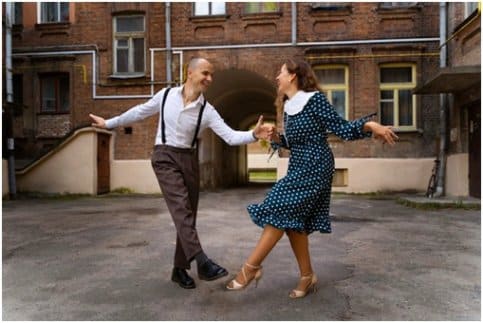With its rich cultural past and dynamic rhythmic footwork, Irish step dancing has captivated audiences all over the world. The footwear, which has developed over time, is central to the dance style, merging history with innovation. In this article, we’ll take a look at the intriguing history of Irish step dance footwear, looking at how tradition and modernization have formed these vital dancing shoes.

1. The roots of Irish step dance shoes
Irish step dance footwear may be traced back to the beginnings of the dance style in Ireland. Traditional dancing shoes, nicknamed “hard shoes,” were of solid leather with wooden or fiberglass heels and tips. Dancers were able to produce rhythmic beats that complemented the energetic music by wearing these shoes. “Soft shoes,” or ghillies, were inspired by Scottish ghillie shoes and were the equivalent of lighter dances. Traditionally, these ghillies had soft leather or suede laces that spanned across the arch of the foot.
2. The legacy of hard and soft shoes
The traditional hard and soft shoes remained an essential element of Irish step dancing as it traveled over the world. Dance schools and artists maintained to preserve the authenticity and beauty of Irish step dance by honoring the history of these footwear types. The compelling rhythms of the dance became synonymous with hard shoes, with their particular noises and percussive aspects. Meanwhile, ghillies kept their original design, allowing dancers to keep the delicate and flowing motions required for gentler dances.
3. Innovation in design
While tradition remained at the top of the list, improvements in Irish step-dancing footwear improved performance and comfort. To increase sound quality and durability, dance shoe producers developed new materials such as lightweight metals for taps. Advanced technology and ergonomic designs provided more flexibility and support, allowing dancers to perform complicated footwork with ease. Furthermore, new dance shoe materials had improved moisture-wicking qualities, ensuring that dancers’ feet were kept dry during intense performances.
3. From customization to personalization
As Irish step dancing became increasingly popular, dancers looked for methods to personalize their footwear. Customization became popular, with dancers decorating their shoes with colorful laces, rhinestones, or elaborate motifs. Some dancers even worked with shoe designers to produce unique footwear that expressed their specific style and personality. The combination of tradition and individuality became a symbol of the ever-changing character of Irish step-dancing footwear.
4. The future of irish step dance footwear
As Irish step dancing grows in popularity, its footwear will definitely develop. The future of Irish step-dancing shoes lies in a combination of innovation, performance advancement, and personal expression while keeping the spirit of tradition. Dancers and designers will continue to push boundaries, ensuring that Irish step dance remains an exciting and dynamic art form for future generations. Material and technological advancements will almost certainly result in even more lightweight and flexible dance shoes, allowing dancers to push the boundaries of their footwork and perform sophisticated choreography with accuracy and elegance. Breathable and moisture-wicking textiles will become the norm, offering maximum comfort and performance during high-intensity workouts.
The growth of Irish step-dancing footwear exemplifies the continuing spirit of tradition and the embracing of technology. From the origins of hard and soft shoes to advancements that improve performance and individuality, Irish step dance footwear is a lively expression of the dance form’s growth, attracting spectators worldwide.